Submitted by WA Contents
"Post-conflict reconstruction is a highly sensitive process" says ASF-Int Board Member Sabine Lepere
Sweden Architecture News - Dec 28, 2021 - 15:27 2928 views
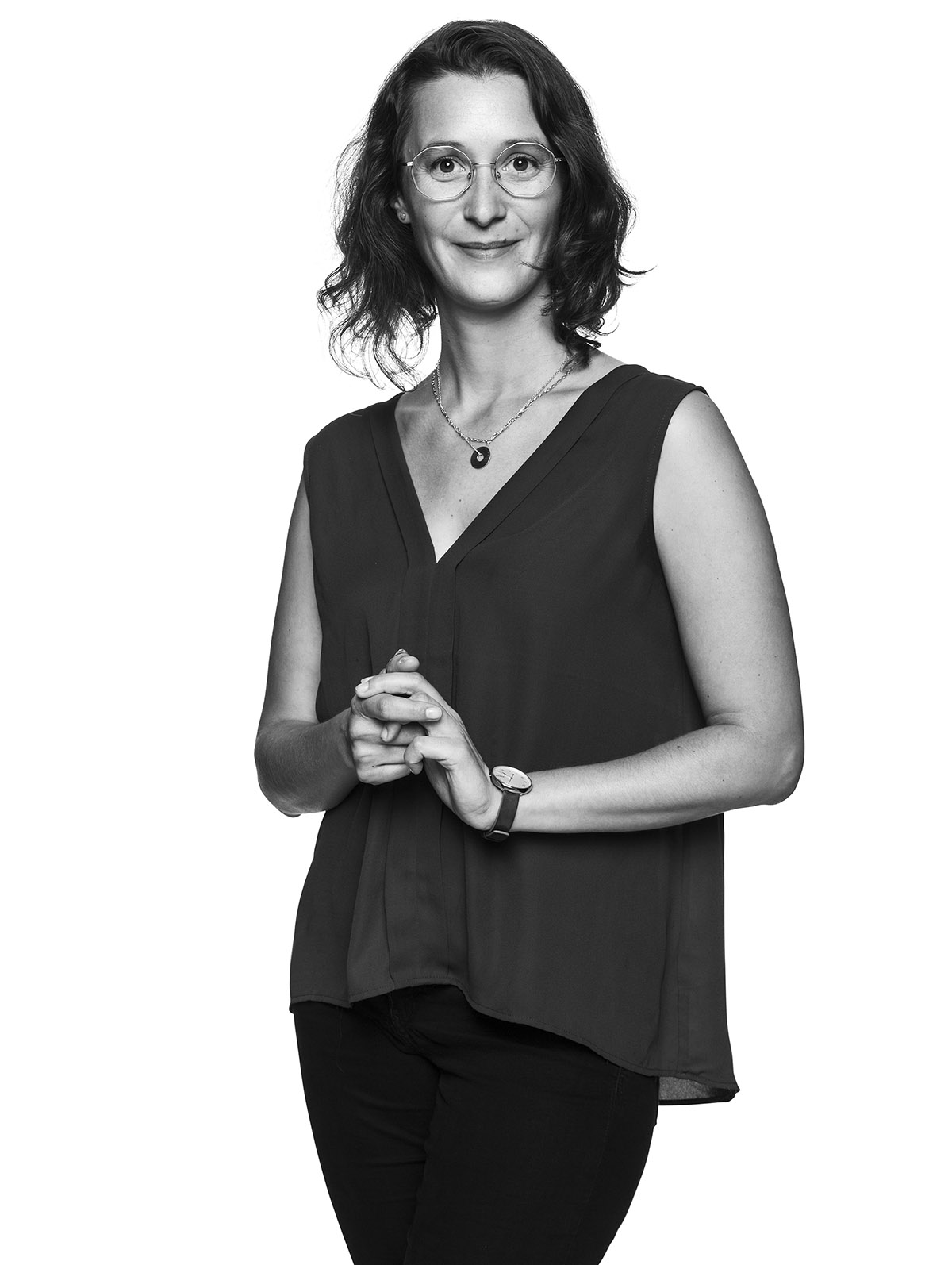
"Post-conflict reconstruction is a highly sensitive process that has unintended consequences, often negative" and it should be considered not only from a technical, physical perspective, but also from a psycho-social perspective, according to social engaged architect and urban planner Sabine Lepere.
In this exclusive interview, held by WAC's former Deputy-Chief Editor Varun Kumar, Lepere explains the importance of inclusiveness and participatory engagement of affected communities to create a peace-building and a sense of belonging in post-conflict reconstruction.
Lepere, who is an active member of ASF-Sweden since 2014 and member of the Board of Architecture Sans Frontières International (ASF-Int) since 2020, draws attention to post-conflict reconstruction processes and emphasizes the importance of how architecture and urban planning can have positive impacts on peace-buildings.
"Post-conflict reconstruction is a process that shall be considered not only from a practical, physical and technical perspective - building roofs over people's heads - but also from a psychosocial perspective, in the sense that built environments constitute places of belonging to which people attach emotional and cultural value," says Sabine Lepere.
Participatory workshop for the materials of the Human School in Kenya. Image © ASF-Sweden
"ASF-Int promotes a socially responsible role of built environment professionals by stimulating social modes of practice"
Sabine Lepere is an architect and urban designer graduated in France in 2012, and she currently lives in Sweden. She is an active member of ASF-Sweden since 2014 and member of the Board of Architecture Sans Frontières International (ASF-Int) since 2020.
Local ASF organisations such as ASF-Sweden become members of ASF-Int by ratifying the Hasselt Charter.
The aim of ASF-Int and its local ASF members is to "enable vulnerable communities access to architectural services, research and educational resources in order to increase their resilience and reduce vulnerability."
In the interview, Lepere also stresses the importance of being in ASF-Int's international network, she adds that "it interfaces with other global organisations and promotes a socially responsible role of built environment professionals by stimulating social modes of practice before speculative economic profitability."
Participatory workshop for the materials of the Human School in Kenya. Image © ASF-Sweden
Throughout her career, Lepere has worked with local underprivileged communities through participatory design processes. After being an active member of ASF-Sweden in 2014, she has been part of the Board's Project Committee for two years and co-organised Challenging Practice Stage B workshops in India and Guinea-Bissau, and volunteered on site and provided administrative assistance to the project Econef in Tanzania.
She holds two Master's Degrees; her first Master's Degree on Architecture and Urban Planning, her second Master's Degree in "International Humanitarian Action" from Uppsala University. Her thesis focused on the contribution of architects to post-conflict reconstruction.
"My purpose was to promote the use of participatory processes"
Explaining her first involvement within the organization, Lepere shares her goals on how to promote the use of participatory processes and share knowledge to disaster response works.
"When I sent my candidacy to this position, I stated that my purpose was to promote the use of participatory processes and the sharing of knowledge around the architects' contributions to disaster response and reconstruction, and those are effectively the objectives that I am pursuing. It is highly gratifying to feel that I can contribute to something meaningful, and learn at the same time," adds Lepere.
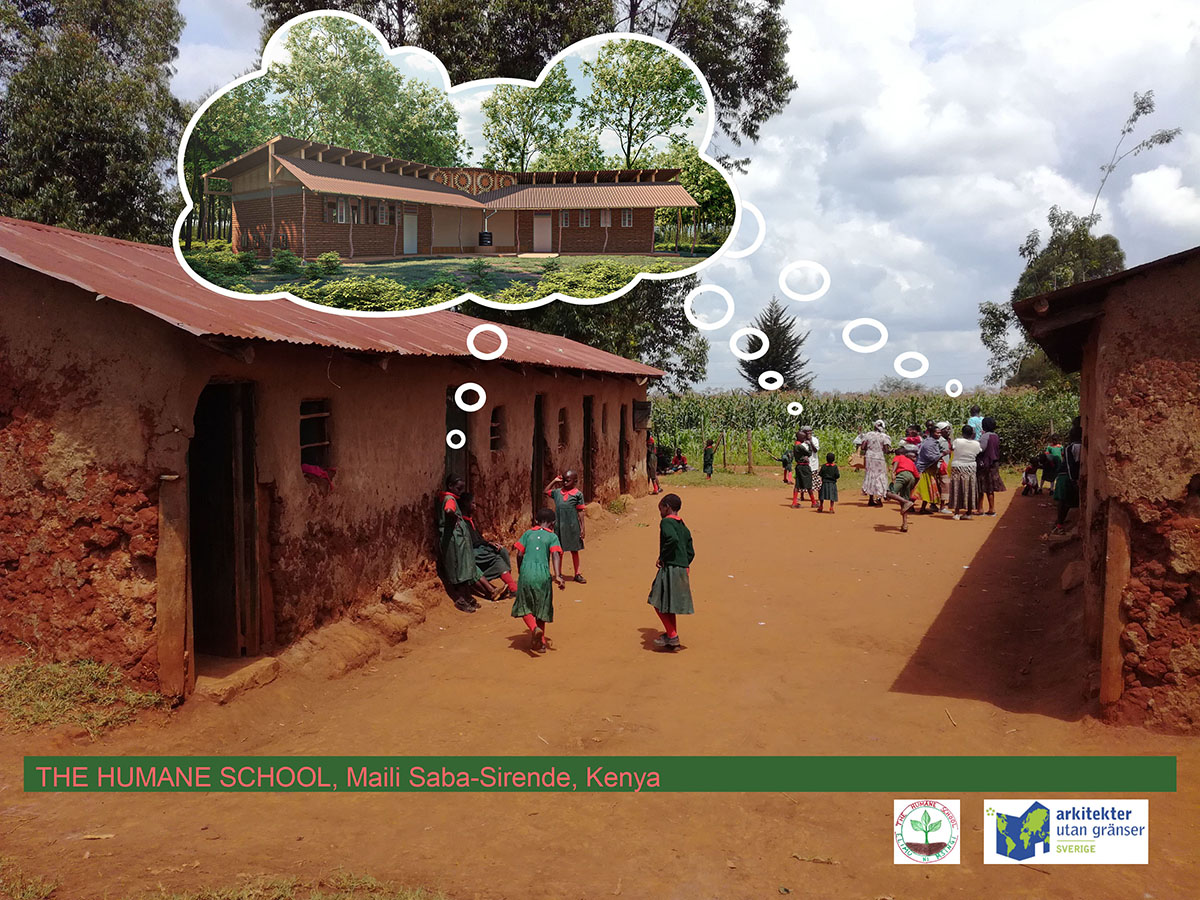
Existing the Human School and dreams. Image © ASF-Sweden
One of significant projects in her portfolio is the Humane School in Kenya, in which she is a lead architect for the participatory design and construction of school near Kitale Kenya.
The Humane School, located in Maili Saba Sirende, near Kitale in Kenya, provides children from a rural community with not only the National curriculum but also skills in arts, farming and other useful daily competences, thus addressing some causes of frequent school dropouts.
The school was located in precarious, small, rented mud huts and needs a safer environment that enhances the learning process, is adapted to its anthroposophical pedagogy and to the local social, ecological, economic and cultural context.
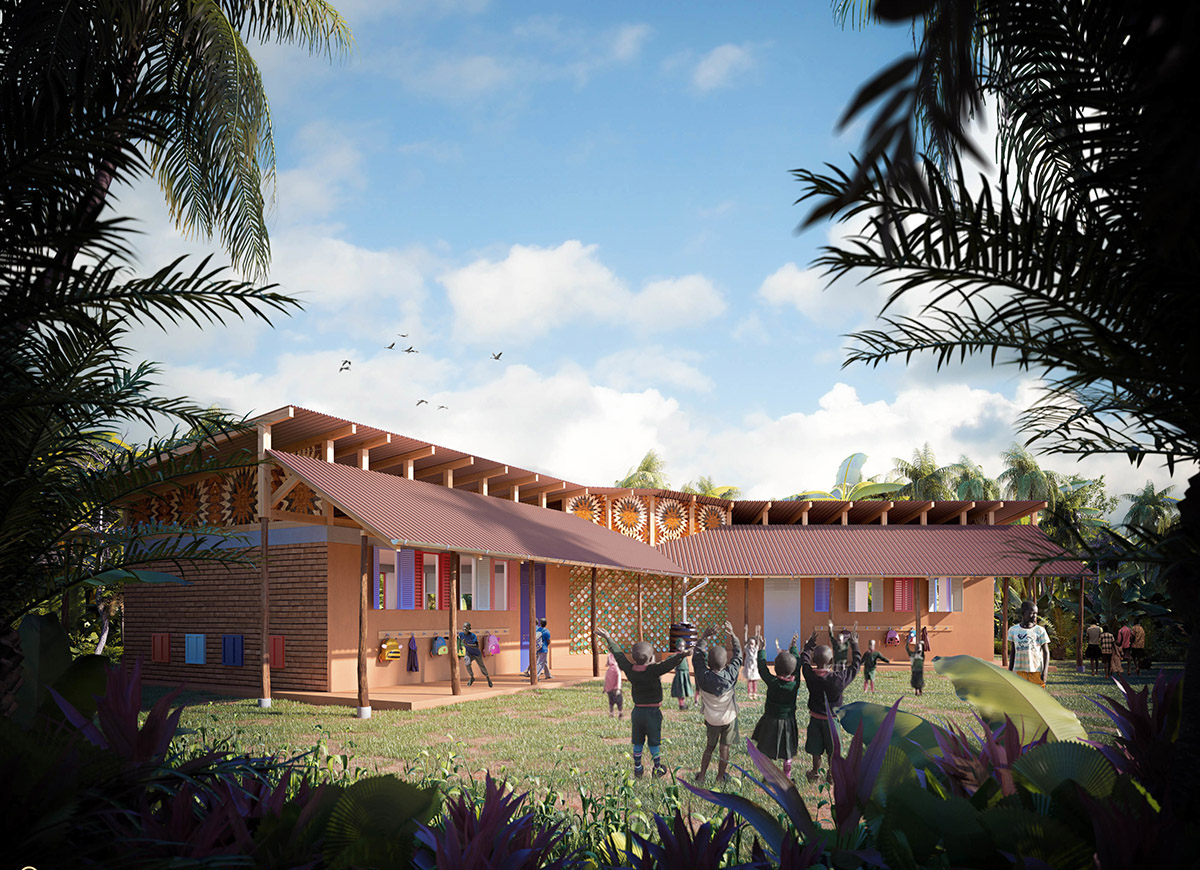
The Humane School - Kindergarten in Kenya. Image © Jules Gaillard for ASF-Sweden
After buying land, successive phases plan for the participatory design and construction of height classrooms, a kitchen/ dining room, an administrative building, several toilets, as well as facilities for animal husbandry and organic farming. The new buildings will be autonomous and made with local materials, techniques and workforce. The incremental building process will favour community engagement and a sense of ownership.
ASF-Sweden contributes to the project through architecture and landscape expertise, guidance in project management, the facilitation of participatory workshops, the development of professional drawings for building permit as well as communication and fundraising.
"Most of architects have enough skills to take on active responsibility"
Besides post-disaster projects, ASF-Int is also conducting workshops and educational programmes, including Challenging Practice, an independent-learning programme. The program "seeks to enable built environment practitioners to engage reflexively with the challenges of inclusive and sustainable urban development," adds Lepere.
By evaluating the current state of architectural profession, most of architects have enough skills to take on active responsibility and can participate in a global disaster response work by setting a planning and working strategy. In close cooperation with the local community and other stakeholders, they can implement concrete post-disaster reconstruction projects.
"The development and humanitarian fields often disregard the built-environment reconstruction sector, and non-governmental agencies do not often value the potential of architects' contributions beyond a very technical perspective," she adds.
"It is therefore very challenging for professional architects to find paid work or missions engaging with disasters, reconstruction and peace-building."
This interview was organized and held by WAC's former Deputy-Chief Editor Varun Kumar. Read a full edited version of the transcript of WAC's interview with Sabine Lepere below:
Varun Kumar: Your Master’s thesis at Uppsala University was about Post-Conflict Reconstruction? Could you share some words on the importance of post-conflict reconstruction and how it contributes to peace-building?
Sabine Lepere: My first Master was in Architecture and Urban planning. After several years of practice as an architect and of volunteering on social projects, I decided to take time off from work to study another Master on Humanitarian Action and Conflicts.
In my Master's thesis I wanted to find a link between those two worlds, and explore the potential social contributions of architects to sustainable peace building in post-conflict reconstruction. I wanted to identify what positive impacts can architecture and urban planning have on peace-building processes.
Post-conflict reconstruction is a process that shall be considered not only from a practical, physical and technical perspective-building roofs over people's heads - but also from a psychosocial perspective, in the sense that built environments constitute places of belonging to which people attach emotional and cultural value. With personal traumas, political and social tensions within the affected populations, the reconstruction is a highly sensitive process that has unintended consequences, often negative. For example, the replication of detrimental local power structures, the creation of a feeling of alienation and the lack of inclusion of the local population can exacerbate latent conflicts on the local level and work against peace-building efforts. This is unfortunately what happens in situations where the economic profitability of large construction companies are involved.
On the other side of the spectrum, conflict sensitive and inclusive approaches to reconstruction promotes appropriation of the new-built environment by the affected populations, a sense of ownership and belonging, and fosters social cohesion and inclusion, elements that are at the heart of sustainable peacebuilding. For the influential practitioner-researcher Jean-Paul Lederach, the improvement of relationships between and within the affected populations is at the center of conflict transformation towards peace building. I believe that architecture processes can contribute to the improvement of relationships through inclusive and participatory engagement of affected communities in the reconstruction of their built-environment.
Varun Kumar: Would you say that the current state of architecture as a profession is yet to become capable of contributing to peacebuilding through architectural skills?
Sabine Lepere: I believe that most architects have the skills to contribute to peace building, and that they should take on their responsibility to actively participate in the global disaster response work, both in the discussion, planning and strategy making but also in the concrete implementation of post-disaster reconstruction projects, in close cooperation with the local community and other stakeholders.
However, most architects work in private, for-profit companies. The development and humanitarian fields often disregard the built-environment reconstruction sector, and non-governmental agencies do not often value the potential of architects' contributions beyond a very technical perspective. It is therefore very challenging for professional architects to find paid work or missions engaging with disasters, reconstruction and peacebuilding. Several architecture practices engage with it via pro-bono work, investing their profit in services for low-income communities rather than, for example, in popular design competitions.
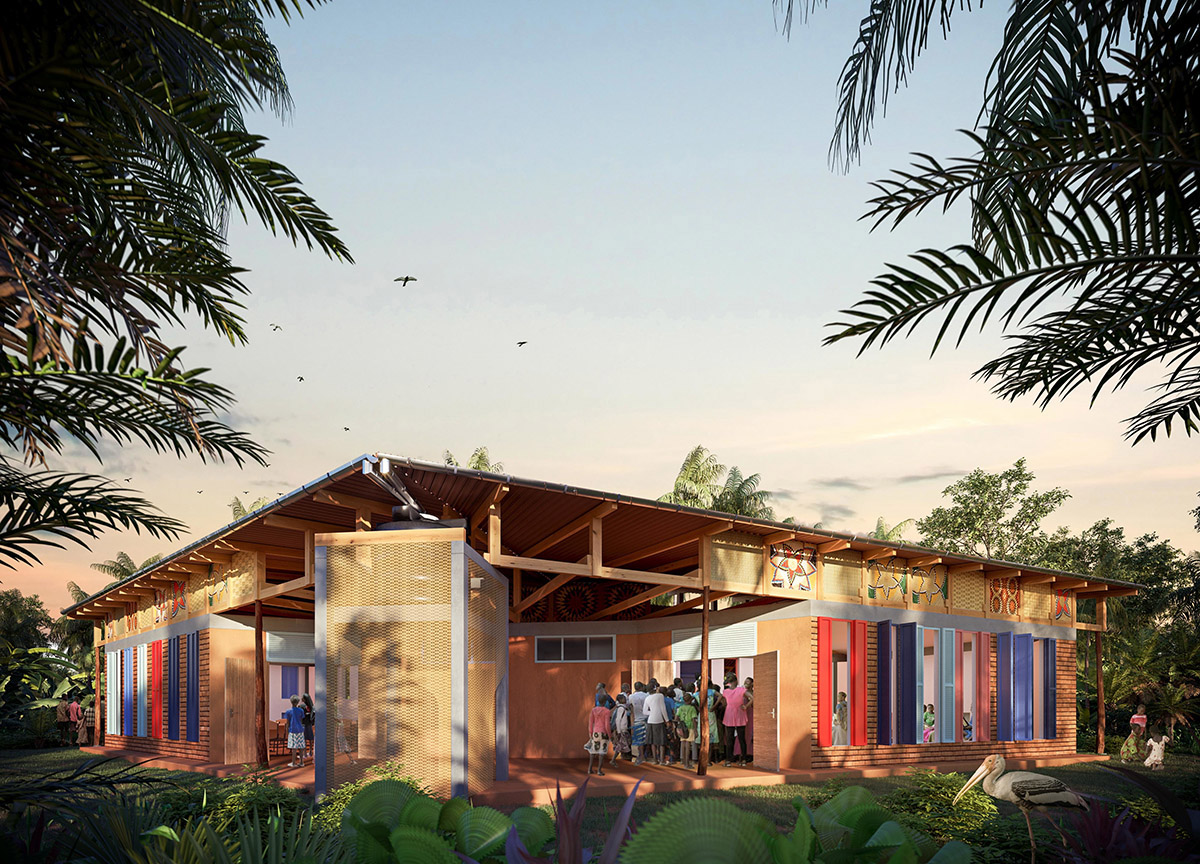
The Humane School - Kindergarten in Kenya. Image © Jules Gaillard for ASF-Sweden
Varun Kumar: What is the role of Architecture Sans Frontières International (ASF-Int) in transforming our profession across the world so that it contributes to peace-building projects more than before?
Sabine Lepere: Architecture Sans Frontières International (ASF-Int) is an independent network of design not for profit organisations, whose purpose is to enable vulnerable communities access to architectural services, research and educational resources in order to increase their resilience and reduce vulnerability. Its focus is not necessarily on peacebuilding projects, although some professionals belonging to member organisations do have experience in post-conflict reconstruction. The values pledged in our Common Declaration of Principles, the Hasselt Charter, are relevant to partners and projects working with peace building topics.
Being an international network, it interfaces with other global organisations and promotes a socially responsible role of built environment professionals by stimulating social modes of practice before speculative economic profitability.
Varun Kumar: It is a very unique position to work as a Board Member at ASF International, being an architect. Please share your roles and objectives, and your experiences of working with them.
Sabine Lepere: I am used to project-based work, either in my jobs as an architect in private architecture offices in Europe, or in my volunteer contributions to hands-on construction projects and workshops with vulnerable communities in several African countries and in India. My position at ASF-Int is quite different. Board members have an administrative role, supporting member organisations and providing a platform for exchange of knowledge and ideas. It requires good management and communication skills, which most architects are trained with, as well as strong ethics.
When I sent my candidacy to this position, I stated that my purpose was to promote the use of participatory processes and the sharing of knowledge around the architects´ contributions to disaster response and reconstruction, and those are effectively the objectives that I am pursuing. It is highly gratifying to feel that I can contribute to something meaningful, and learn at the same time.
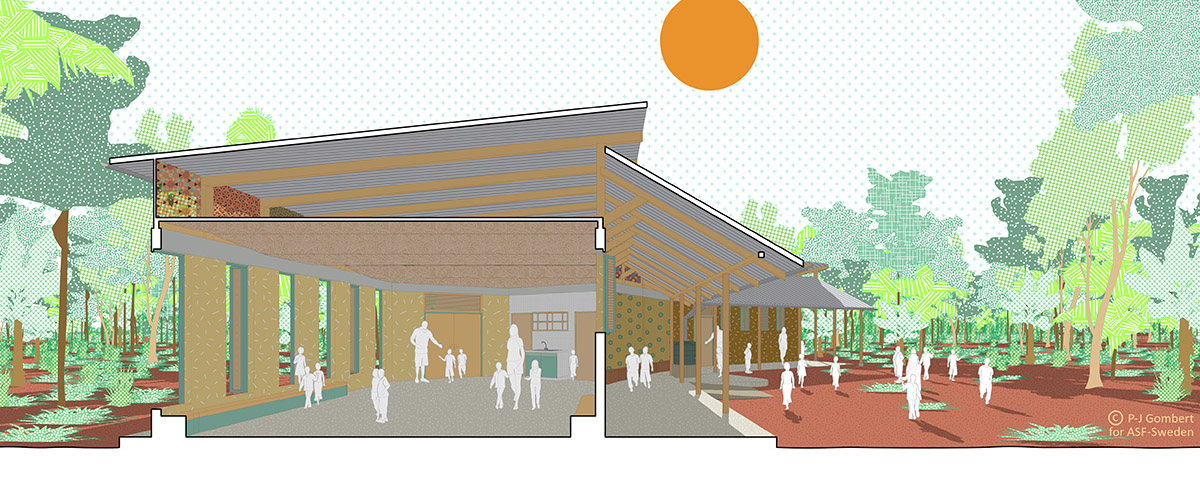
Perspective section of the Humane School in Kenya. Image © P-J Gombert for ASF-Sweden
Varun Kumar: You also coordinate the disaster response working group at ASF-Int. What is the role of this group and please share what the nature of your work is with this group?
Sabine Lepere: The Disaster Response working group works with disaster and risk management questions. Its aim is to continue to develop ASF Network´s capacity for active participation and responsibility taking both in the discussion, planning and strategy making but also in the concrete implementation of post-disaster reconstruction projects, in close cooperation with the local community and other stakeholders. To start, we need to build up and share knowledge around post-disaster risk reduction and design.
At the moment we are gathering information on experts within our member organisations with experience from post-disaster reconstruction, resilience planning and related issues. We are also trying to engage with them in order to develop ideas on how the ASF network could serve actively in these topics.
Varun Kumar: Please share some important initiatives that ASF-Sweden has taken up in the recent past and what were your roles in it?
Sabine Lepere: ASF-Sweden is one of ASF-Int member´s organisations. It initiates and participates in projects at national and international levels, from placemaking in informal settlements to the construction of buildings needed and lacking in a community. All projects are driven by a high level of participatory design in collaboration with the local community, and relevant groups. You can read about those on their website.
For a few years I contributed to the work of the Project Committee, which supports ongoing projects and assists the start-up of new projects, developed policies and guidelines that are in line with ASF's common platform, the Hasselt Charter, and also follows up on-going and completed projects to assure their quality.
I am also Lead Architect for ASF-Sweden's project The Humane School, which consists in the participatory design and construction of new school facilities near Kitale in Kenya. Despite a slow process with several setbacks, including land tenure issues, lack and uncertainty of funding, and a global pandemic, this project stays close to my heart since I stayed for a month with the local community in 2018, undertaking a preliminary study and participatory design workshops with teachers, students and their parents. I am now in the process of handing over the drawings to a local architect and a local structural engineer who will adapt them to administrative and technical local requirements and apply for a building permit. We are also looking for sponsors and raising money for its contruction.
Varun Kumar: ASF has a charter and member countries have ratified the same. ASF is also known for conducting workshops and educational programmes besides their projects. Can you tell us more about it?
Sabine Lepere: Indeed, all members of ASF International have ratified the Hasselt Charter, which includes ethical principles for the projects they engage with. Because those principles have been written more than ten years ago, a critical evaluation and actualisation is currently being conducted by ASF members.
The main educational programme provided by ASF-Int and some of its members is called Challenging Practice. Challenging Practice is an independent-learning programme that seeks to enable built environment practitioners to engage reflexively with the challenges of inclusive and sustainable urban development. The course, based on principles of active, dynamic, and action-based learning, is structured in 3 stages including introductory texts, a role-play based seminar, a practical field workshop or internship and a reflective essay. It is run by experienced volunteers, open to any built-environment professional, and it is a great way to start engaging with ASF! Read more and get started with Challenging Practice programme.
Varun Kumar: What message would you share to the architecture community about the present state of affairs and the way ahead?
Sabine Lepere: Even though we are daily fed with fear and delusions about our future, an active information search with a positive mind will bring you to see the wide range of collective efforts which benefit disadvantaged groups, mitigates climate emergencies and shows the way to a more equitable future, respectful of the planet and its people.
Top image: Sabine Lepere, courtesy of Sabine Lepere.
